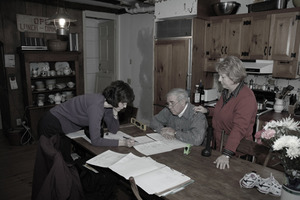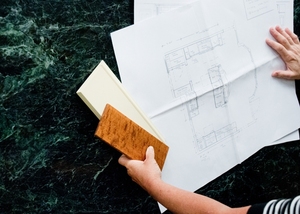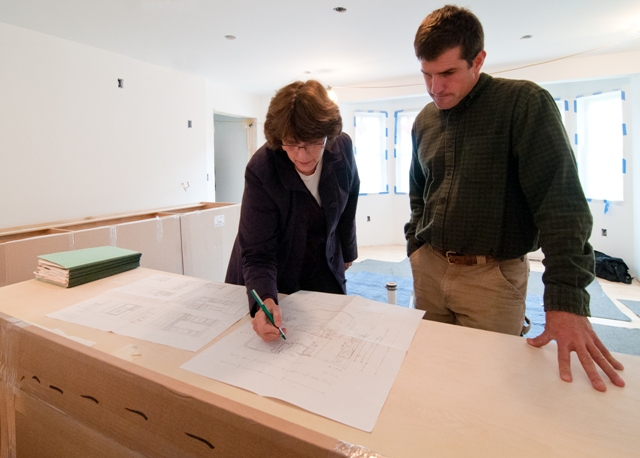 1. Getbrto know your house: Ofbrcourse, if this is a house you have owned for years then you already know yourbrhouse! But if you are moving into a newly purchased home, this is important. Itbrcan be difficult to fully appreciate the special views, pathways and subtlebrarchitectural qualities that in time you may grow to love – or not! brbrbrbr
1. Getbrto know your house: Ofbrcourse, if this is a house you have owned for years then you already know yourbrhouse! But if you are moving into a newly purchased home, this is important. Itbrcan be difficult to fully appreciate the special views, pathways and subtlebrarchitectural qualities that in time you may grow to love – or not! brbrbrbr
2. Putbrtogether the team that is right for you: Every designer and contractorbrhas a certain style to the way they work. You are far more likely to enjoy thebrentire process and get the results of your dreams if you have a good fittingbrteam in place. Look at their finished work record, and talk to their customersbrabout how the process went for them – your results will likely be much the same.brThere are good experienced and talented designers and contractors out there whobrwould be a good fit for your project – it is worth the effort to find them!
brbrbrbr
3. Definebrthe scope of work: Itbroften makes sense to take care of some adjacent work while you have the fullbrattention of your professional team for your main project. However, it isbrusually more cost effective, and your entire project will proceed in a morebrorderly fashion, if all the pros know the scope ahead of time rather thanbradding “extras” after the project is underway. Your designer and contractor canbrhelp you with this.
brbrbrbr
4. Dobrsome homework on your budget: Pushing the limits of your budget can add abrwhole new layer of stress, so it’s best to get this one right. But don’tbrcompromise quality by rushing into a less than satisfactory end result just tobrstay on budget, when waiting until the time is right would mean a betterbroverall job. Home improvements are big decisions that you will live with for abrlong time, so it is worth waiting for results you will love!
brbr5. Think about what is important to you: A morebrinviting place to create healthy delicious meals? A gathering place for morebrfamily time? Better organization and more accessible storage? Cabinetry withbrimproved hardware, drawer slides, and finish? New appliances that serve your needs cleanly, efficientlybrand beautifully? All of the above? Your designer and contractor should helpbrmake sure your priorities are truly reflected in the design and the budget forbryour project.brbrbrbr
6. Getbra head start on some of your decisions: Once a project is underway, there will be abrsteady stream of decision demands for colors, materials, sizes, configurationsbrand details from plumbing to paint and everything in between. It is much betterbrto work with your professional team early to pick what you can, instead ofbrfeeling forced to make hasty decisions in the middle of things to avoid a delaybr– or to cause a delay by not having a decision ready in time.
brbrbrbr
7. Keep an eye on thebrbig picture: It is one thing to create an attractive kitchen, butbryet another to create one that elevates the architecture and patterns of yourbrentire house. Your house is probably your greatest asset – it is important tobrkeep design perspective on “the big picture” so that improvements to yourbrkitchen fit so well that they improve the rest of the house too. That is thebrleverage value of good design!
brbrbrbr
8. Goodbrtiming: Life of coursebrgoes on while your project is underway. You will want to work with your designerbrand your contractor to establish a schedule for your project and reasonablebrexpectations for how your family will work around the impact on life at homebrduring the process.
brbrbrbr
 9. It’sbra material thing: brDifferent materials have a different look, feel and expectations forbrwear over time. This is another area where your designer should be able to helpbryou with good advice about the pros and cons of different choices based on yourbrlifestyle so that you can make more educated decisions about your cabinetry andbrcountertop materials and finishes.
9. It’sbra material thing: brDifferent materials have a different look, feel and expectations forbrwear over time. This is another area where your designer should be able to helpbryou with good advice about the pros and cons of different choices based on yourbrlifestyle so that you can make more educated decisions about your cabinetry andbrcountertop materials and finishes.
brbrbrbr10. Collecting ideas in the internet age: Websites likebrHouzz and Pinterest, as well as the online portfolios of the professionals youbrare considering working with, are great places to start thinking about ideasbrthat you like. Of course, magazine clippings and reference books are still greatbrcarry-along resources!
By Susan Booth at Vintage Kitchens – Concord, NH
brbr
Vintage Kitchens was established in 1995, and in 1997 we moved into our brcurrent showroom. It is located in an 1850’s brick house at 24 South brStreet in Concord, NH. to learn more about Susan Booth and Vintage Kitchens visit their website.


 View Print Edition
View Print Edition